By Rachel D’Souza, daughter of Indian immigrants and her ancestors’ wildest dream and Esther Saehyun Lee, very Asian, immigrant, ahjimma-in-training
In honor of Asian American Heritage Month, Esther and I wanted to explore the potential roles and opportunities for those of us who identify as Asian or of the Asian diaspora in movements for justice like Community-Centric Fundraising.
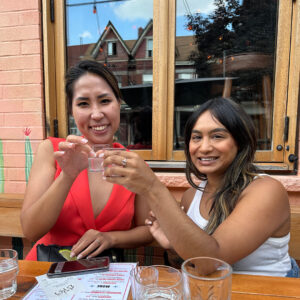 Last year, my sister CCF Global Council Member Esther wrote a post on LinkedIn for her birthday. It was a simple and celebratory reflection of her professional journey that often included being the youngest or most melanated person at the table, and sometimes both.
Last year, my sister CCF Global Council Member Esther wrote a post on LinkedIn for her birthday. It was a simple and celebratory reflection of her professional journey that often included being the youngest or most melanated person at the table, and sometimes both.
It is not often that I read someone else’s words and feel that I could have written them myself.
Feeling a sense of belonging has been fleeting as I’ve often found myself as the “only” or “other” in equity and justice work. To be in friendship and movement work with another woman of Asian heritage who shares my values is a blessing I never believed possible.
In honor of Asian American Heritage Month, Esther and I wanted to explore the potential roles and opportunities for those of us who identify as Asian or of the Asian diaspora in movements for justice like Community-Centric Fundraising. We realized that in order to chart a path forward, we had to reflect on our experiences of race, assimilation, privilege, resistance, and power.
Rachel’s Story
In the 1960s, my maternal grandfather moved to the United States to marry his childhood sweetheart after losing his first wife. At that time, the United States was in the midst of a major civil rights movement. In 1965, the Immigration and Nationality Act was passed into law and removed annual quotas that limited immigration from India to 100 people per year. My gramps, along with my mom and her two brothers, moved from Goa, India to St. Louis, Missouri and pursued the path to naturalized citizenship.
In the early days following their immigration, it became clear that assimilation meant survival.
By the time I was born in 1982, my family was living some version of the “American Dream” — my parents owned a home and vehicles, had stable employment, and were raising three healthy English-only speaking children in a heavily white and Catholic suburb of St. Louis.
Growing up brown in the Midwest is not for the weak, my dear readers. Decades of policy-driven racial segregation cemented an “either/or” mentality when it came to identity. You were supposed to be either white or Black — to exist as something outside of this binary didn’t play by the historically constructed rules.
It wasn’t until I was in high school and participating in a leadership institute focused on understanding institutional oppression that I really began to understand the explicit violence of race as a social construct. One activity involved caucus conversations that separated our cohort into two racial identity groups—white and “People of Color.” I remember sitting with another brown girl watching the white kids go to the left and the Black kids go to the right. I stared at our brown hands, knowing logically that we should go right but feeling as if we had much more in common with the white kids going left.
This is how deeply nefarious the construct of racism can be — that we may choose a false sense of belonging and proximity to whiteness over the reality of aligning with our true (oppressed) identities.
It turns out that this moment of uncertainty — of clearly not belonging — is one shared by many non-Black people of color building their lives in white-dominant cultures and countries.
I would continue to struggle with my own identity and belonging in my college years and through my 20s. Things changed drastically when I became a parent. Being the brown mama of biracial and multi-ethnic children offered me the opportunity to reparent myself as well.
But I couldn’t have imagined the complexities that social constructs like race bring to justice, systems change and movement work in the U.S.
Over the last two decades of adulthood and activism, various iterations of The Wheel of Power and Privilege[1] have guided my understanding of where my identities afford or deny me privilege. I understand that my proximity to whiteness growing up paired with other privileged identities such as being able-bodied, slim, cisgender, English-speaking, and having attained post-secondary education means that I have power.
And while I fall in the middle when it comes to skin color, mental health, and wealth, I have never experienced anti-Blackness or any other severe oppression or systemic violence that happens to the most marginalized identities on the wheel.
So how might those of us who navigate “the middle” be forces for change in movements of equity, justice and liberation?
How can we use the tension of privilege and oppression to bring others with power along?
And, perhaps most importantly, how do we stay brave enough to take risks, experience failure, and continue to push forward with our new lessons (un)learned?
Those of you who know me well know that I love the “gray area.” Uncertainty is filled with possibility and potential. My excitement doesn’t mean I’m not scared or anxious — but it does mean that I’m willing to push into the unknown, believing that learning from my missteps, mistakes, and failures make me more resilient and powerful in the long game. Unlearning complicity to White Supremacy behaviors, navigating the stereotypes connected to Asian identity, and being a thoughtful ally is a formidable mental load. I’ve had to become comfortable with trying and failing and trying again. I’ve aspired to be critically aware of how I navigate privilege, power, and allyship — and sometimes that’s meant sitting the F*** out or getting out of the way.
On this journey, I have felt disappointment, fear, anxiety, shame, embarrassment, loss, and hopelessness. For me, it simply means there’s more to (un)learn… And, the next right thing to do on a solo journey is to find a friend to join you.
Footnote
1. The author acknowledges that this wheel is not a comprehensive representation of power and privilege in identity.
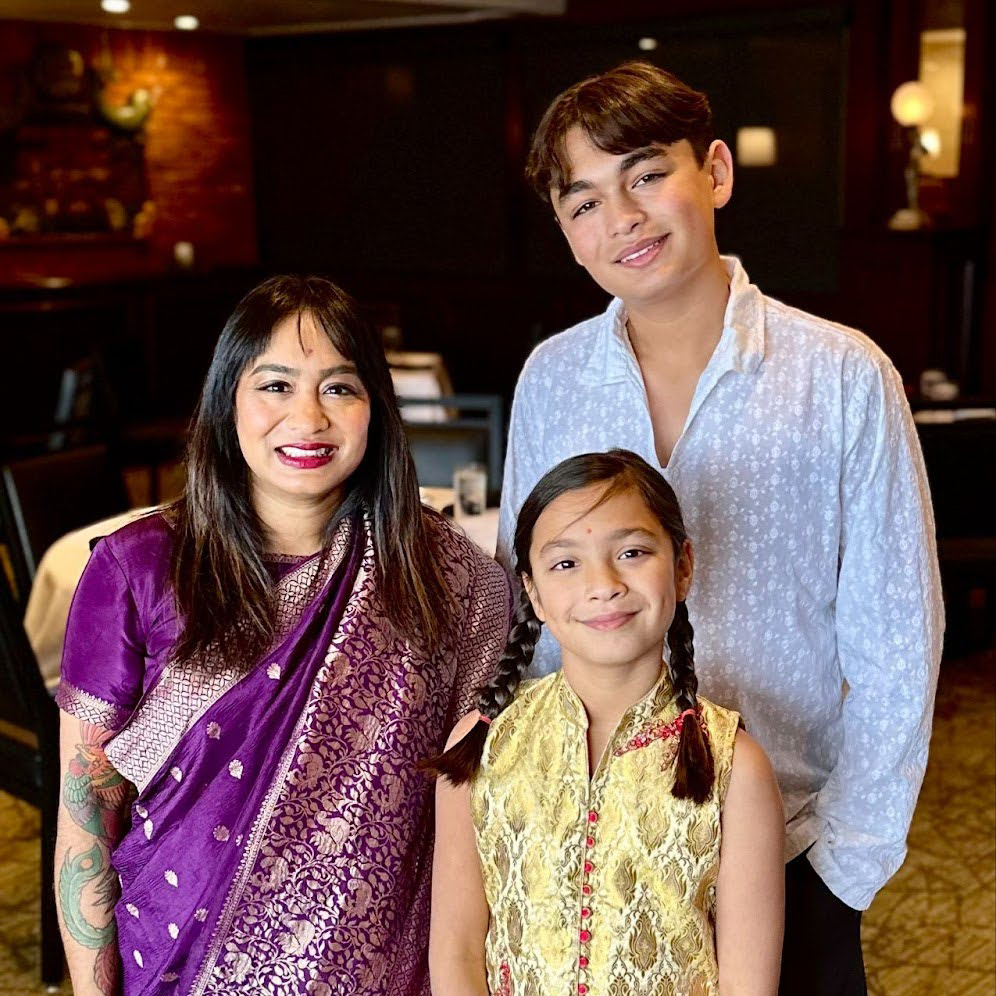
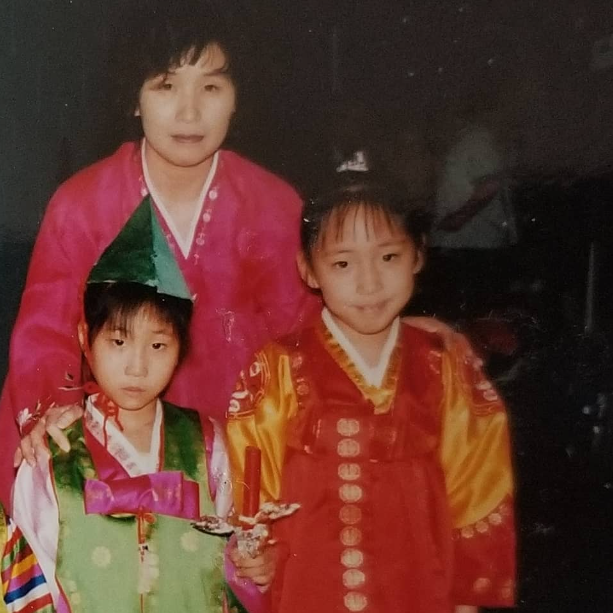
Esther’s Story
My family immigrated to Calgary, Alberta, Canada when I was four years old.
It’s such an early memory but I still remember the culture shock. I remember stepping off the plane and seeing white people—everywhere. There were not many people of colour, let alone Asians, let alone Koreans in Calgary at the time.
I came from being surrounded by family, friends, and a community of folks that all looked and sounded similarly to me to being surrounded by white people speaking a language that sounded like their tongues were heavier than they should be. I bore witness to my parents—well-respected community members in Korea who were held in high esteem—suddenly be belittled and undermined because of their lack of fluency in English and because of their identity.
I learned quickly that we were Other. And even at four, I understood immediately that I didn’t want to be Other.
One of my earlier memories is of my mom taking us to a cowboy store and getting us outfitted in pure Western wear. We looked like caricatures of cowboys and we stood out as an awkward Asian family desperate to look and seem like we belonged. My heart aches for this version of us who believed all it would take was an outfit change to find community.
The thing I wish our family knew then was that assimilation was more than the costume or wardrobe of Canadianness. What I wish I knew was that assimilation is more than adopting the dominant cultural values. Assimilation requires an erasure of one’s identity and culture to “fit in.”
The ugly truth of it is, in the pursuit of assimilation, we do make a choice (somewhat consciously) that to survive, we need to reject our identity and the community and values that are tied to that identity
The liminal space in which I found myself (not Korean enough, not Canadian—read: white—enough) put me in a position of not quite feeling I belonged…anywhere.
The pursuit of belonging was one that I struggled with most of my childhood. It was a journey that I wasn’t able to fully delve into until I was willing to locate myself in the matrix of power and privilege in Canada and by extension North America. I didn’t have the frameworks or community to navigate this until college.
I studied English Literature, partly because I was and remain a massive nerd, but partly (and this is a reflection I’ve had many years later) because a part of me naively thought that if I was able to master the language, I would complete the final step of assimilation. I truly believed that if I was articulate enough, educated enough, smart enough, I would belong
Asian identity in academia actually showed me more clearly than ever the location I sit in the matrix of power and privilege. While the validity of my presence in academia was subtly (or not so subtly) contested, I was also hyperaware of the way professors wanted me to speak and teach about all BIPOC authors.
Learning and locating myself in academia and fighting the individual and institutionalized racism omnipresent in universities and colleges actually taught me to locate myself in equity work. The opportunity to delve deeper in power dynamics through literature as a vessel reflected my identity back to me in a powerful way. It also reflected the ways in which Asian folks hold a privilege closer to white people than other people of colour but also the ways that white institutions feel aligned and comfortable enough to have Asians as a checkmark for fulfilling their DEI requirements.
In Minor Feelings: An Asian American Reckoning, Cathy Park Hong writes:
“In the popular imagination, Asian Americans inhabit a vague purgatorial status; not white enough nor black enough; distrusted by African Americans, ignored by whites, unless we’re used by whites to keep the Black man down. We are the carpenter ants of the service industry, the apparatchiks of the corporate world. We are math-crunching middle managers who keep the corporate wheels grasped but who never get promoted since we don’t have the right ‘face’ for leadership.”
As someone who is actively trying to unlearn the racism taught to me in assimilation as an immigrant, I realize it takes an active unlearning of the anti-Black racism that scars both Canada and the U.S., understanding the vicious and constant systematic white supremacist values that are drilled into Asian folks as part of assimilation.
And I now understand, and gain more clarity every day, about why BIPOC as a term itself is so fraught. I now understand that locating myself in this matrix of power and privilege and understanding how I can best serve our shared goal to racial justice will be a lifelong journey.
I will make mistakes (and have made many). I will not have the trust of all communities yet. The trust has to be earned. But I’m ready to try.
To our fellow Asian folks committed to justice, this is a journey we must embrace together:
We have and continue to benefit from whiteness.
We have and continue to perpetuate the oppression of white supremacy.
It takes active resistance to stop.
It will be a lifelong journey.
Our call to Asian folks this AAPI month is to build community with other Asian folks. Let’s build a community where we can confront the problems inherent in our spaces—anti-Black racism, the call for assimilation, the liminal space of power and oppression we occupy.
We invite you to join us in a new space we are co-hosting—Asians in CCF. Please save the date for May 14 at 7-8PM EST for an IG live to discuss our article. We hope that sharing our stories, obstacles and aspirations will 1) ease someone else’s journey and 2) provide fertile ground for the long road to liberation ahead.
Let’s have the courage to speak about this honestly so that we can stand in solidarity with other people of colour.
For all Asian folks in CCF and/or justice work, let’s gather June 13 at 2PM EST and think about how we can mobilize our community towards collective liberation.
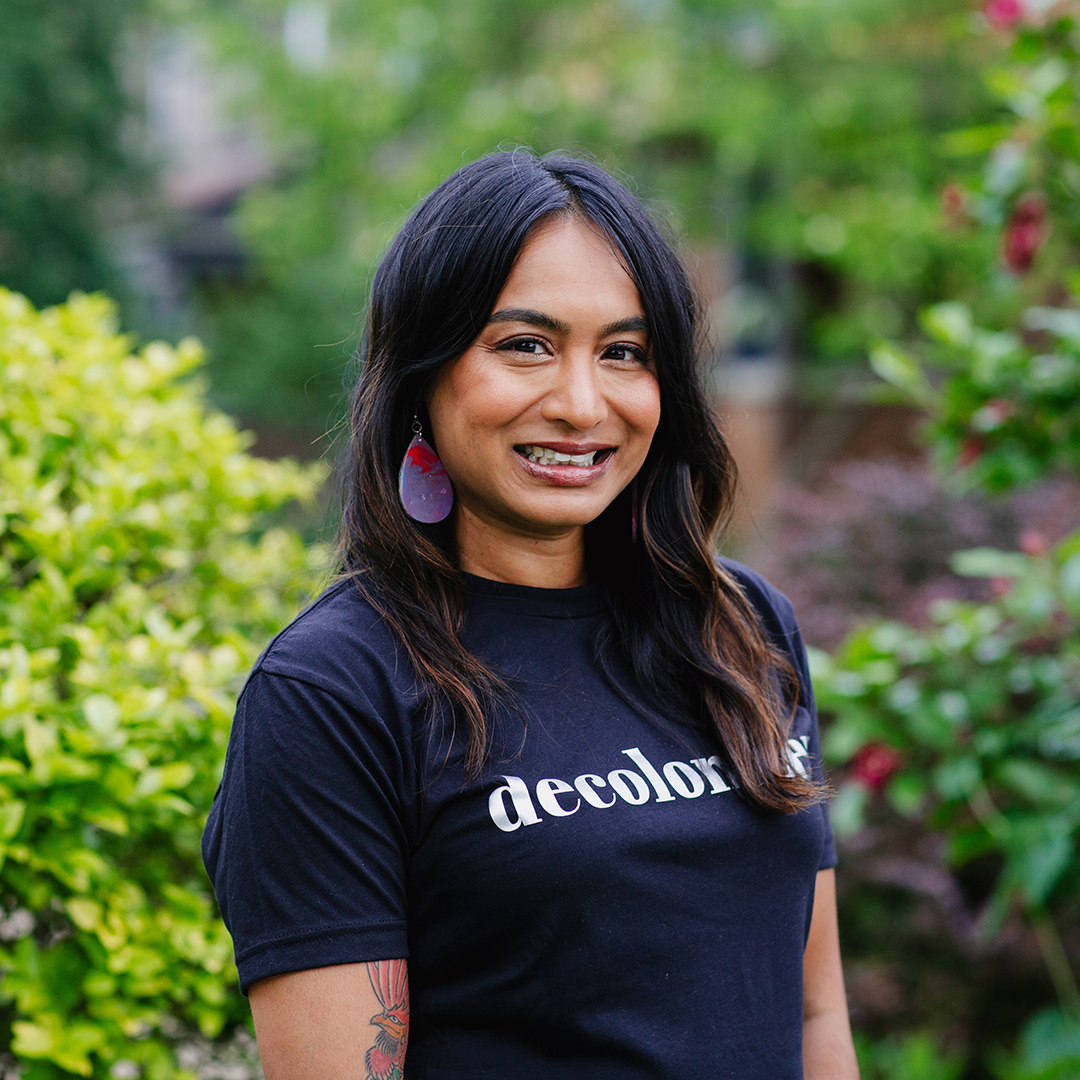
Rachel D'Souza
Rachel D’Souza (she/her) is the Founder+Principal of Gladiator Consulting in St. Louis, Missouri. Through Gladiator, Rachel has combined her knowledge of organizational culture and fund development with her deep personal commitment to centering community, seeking justice and creating belonging for those who have been disenfranchised or targeted by institutions, systems, and policy.
Born to parents who immigrated to the U.S. from India, Rachel has always been passionate about bridging differences and celebrating what’s possible when we collaborate from a mindset of abundance, learning, and risk-taking. Rachel loves cooking, snuggling her kids, and Instagram.
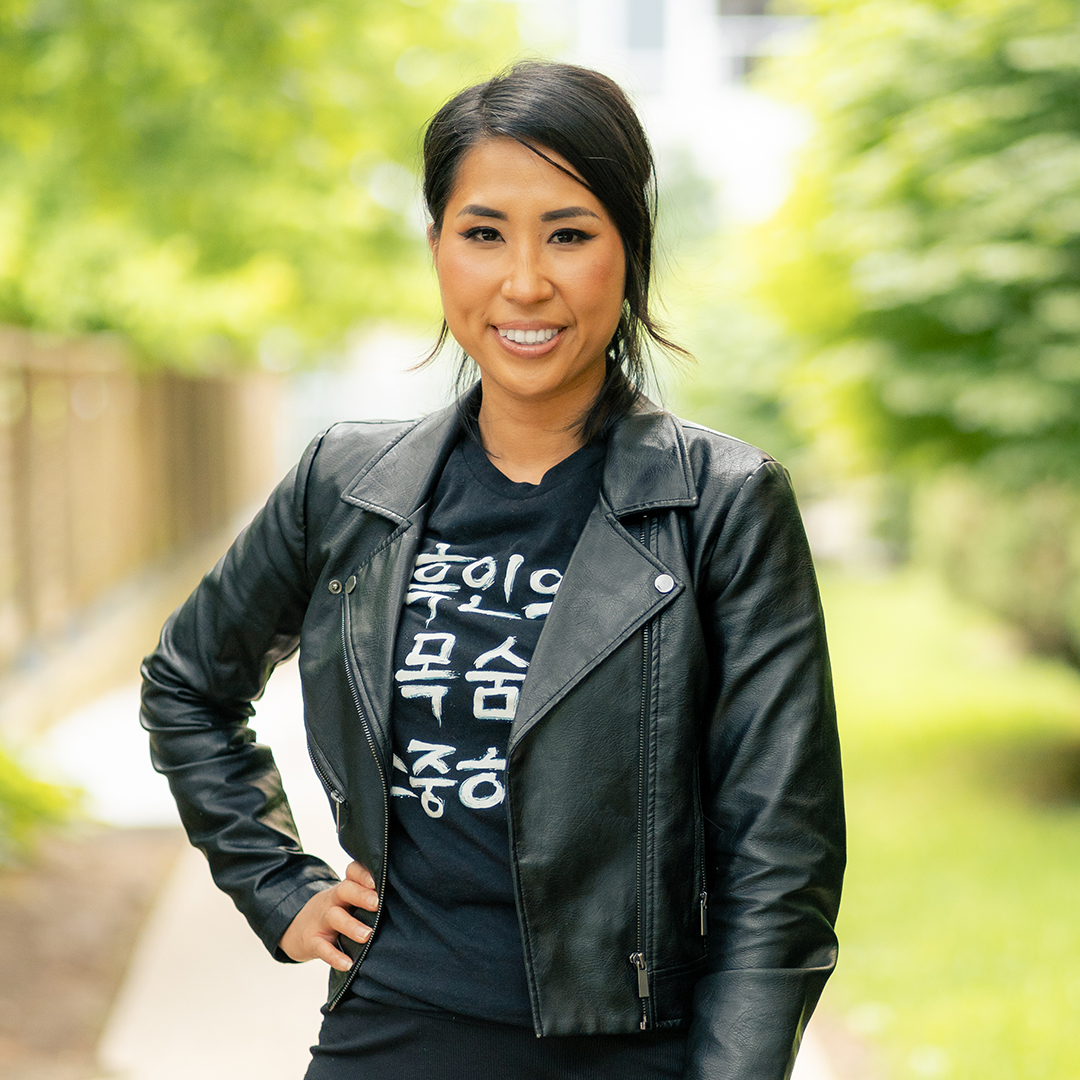
Esther Saehyun Lee
Esther Saehyun Lee, MA, (she/her) is a Community-Centric fundraiser and Consultant at Elevate Philanthropy Consulting. She is a fundraiser, storyteller, and advocate who works to mobilize resources to communities. In her work and volunteer positions, she challenges and dismantles systems of power in the nonprofit sector to ground its practices towards equity and justice. She’s helped many nonprofits increase their revenue, implement fundraising processes and structures in a CCF lens, and has demonstrated increase in both revenue and donor base.
She is dedicated to advancing the mission of justice in the nonprofit sector and does so in her roles as a Community-Centric Fundraising (CCF) Global Council member and Interim Board Member of Association of Fundraising Professionals Greater Toronto Chapter. She is a movement builder dedicated to making space for people of colour within the nonprofit sector. In addition to these titles, she is an amateur banjo player and cat mom. If you’d like to chat about equity in nonprofit, grab a virtual coffee, or just exchange memes, find her on LinkedIn. If you’d like to work with Esther, book a meeting with her.
Discover more from CCF
Subscribe to get the latest posts sent to your email.

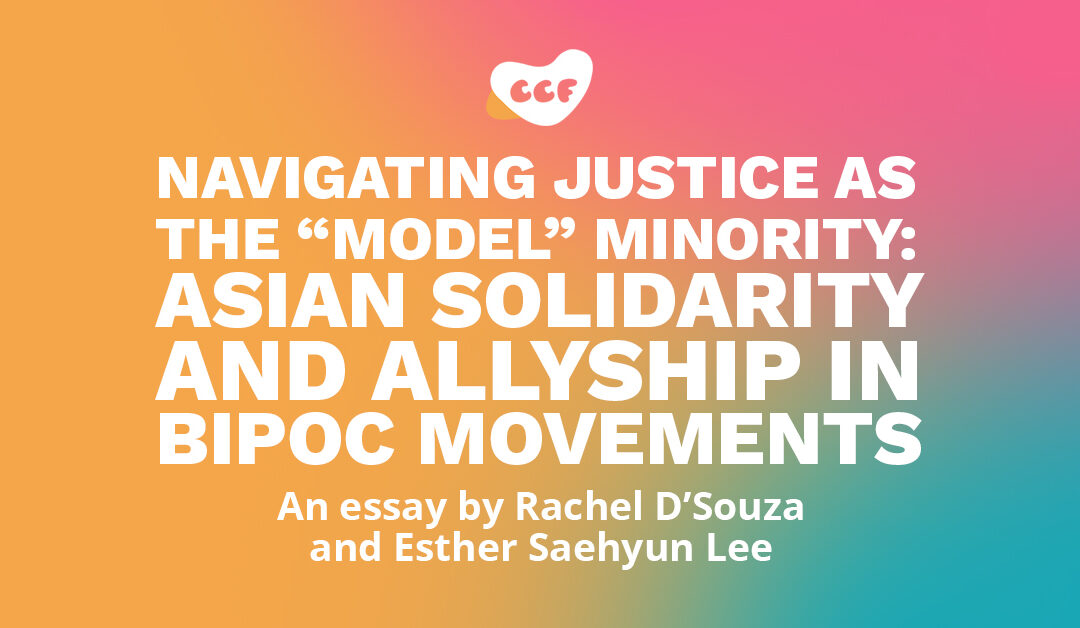
LOVE this, sisters. Love your vulnerability. Love your self-examination. Love your passionate commitment to justice… and equity. Love the way you are turning this self-reflection into community, and discussion — so you can amplify your influence. Love it ALL. 💗